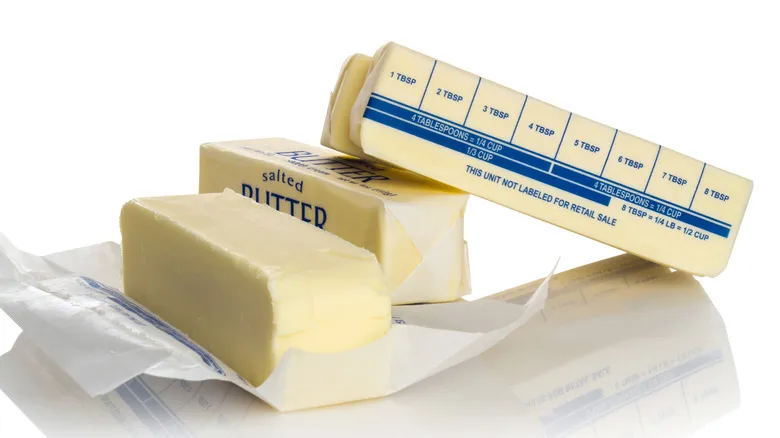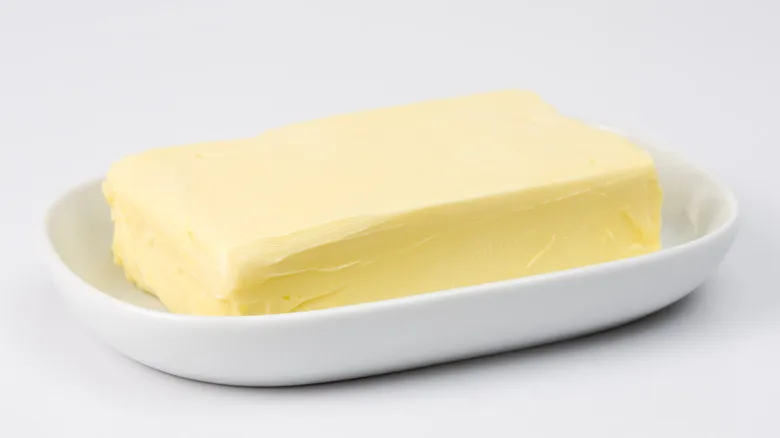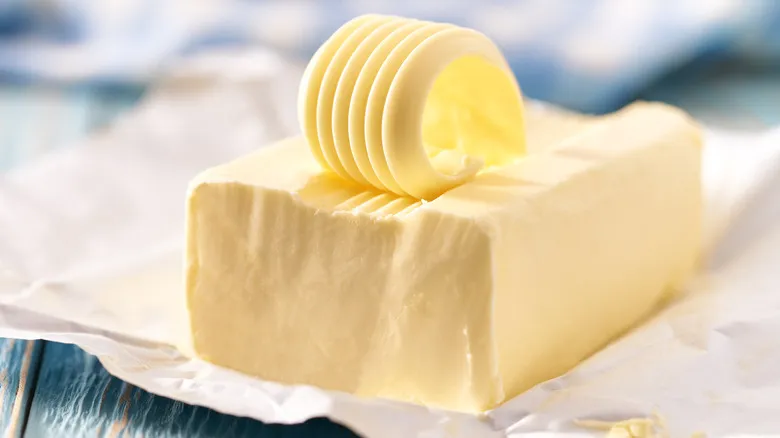High butterfat indicates a richer taste

When you look at the packaging of a stick of butter, you'll often see a percentage indicating the butterfat content. A higher butterfat percentage generally means the butter is richer and more flavorful. For American butter, this figure is usually around 80%. In the U.S., butter must contain at least 80% butterfat; otherwise, it is classified as a "spread." In contrast, European butter often has a butterfat content of up to 86%.
Butterfat is crucial in determining the butter's texture and mouthfeel. A higher butterfat content leads to a creamier, smoother texture, making it perfect for spreading on bread or for use in recipes that require a silky consistency. Conversely, butter with lower butterfat content may have a firmer texture, which can be advantageous in certain situations.
Additionally, butterfat plays a key role in carrying and enhancing the flavors of butter. This is why European-style butter, with its elevated butterfat content, tends to have a more robust and intricate flavor profile. In summary, the butterfat content on a stick of butter indicates its richness, texture, and potential uses in cooking.
How butter was churned matters

When looking for the ideal butter, it's important to look for the phrases "slow churn" or "small batch" on the packaging. While these terms may seem like mere marketing jargon, they actually signify specific production techniques that can enhance the quality of the butter. Typically, butter is produced using large churning machines that mix vast amounts of fresh cream to separate the butter from the buttermilk. This large-scale, rapid method can introduce air bubbles into the butter, negatively impacting its flavor and texture.
"Slow churn" describes a careful churning process that extends the production time, resulting in butter with a creamier consistency and a more robust flavor. On the other hand, "small batch" indicates that the butter is made in limited quantities, often with a greater emphasis on craftsmanship and meticulous attention to detail. This approach allows for better control over ingredient quality and the overall production process. Both "slow churn" and "small batch" labels reflect a shift away from mass production towards a more artisanal method.
These production techniques are frequently linked to higher quality, highlighting the subtle characteristics of the butter. The final product is usually unique, offering a flavor and texture that distinguishes it from more commercially produced options.
Recommended

Why Trader Joe's Doesn't Deliver Groceries (And Probably Never Will)

Keedoozle: The Retailer That Was Half Grocery Store, Half Vending Machine

12 Store-Bought Frozen Meals To Keep Out Of Your Cart

This One-Of-A-Kind Mexican Costco That Has A Unique Attraction In The Parking Lot
Next up

